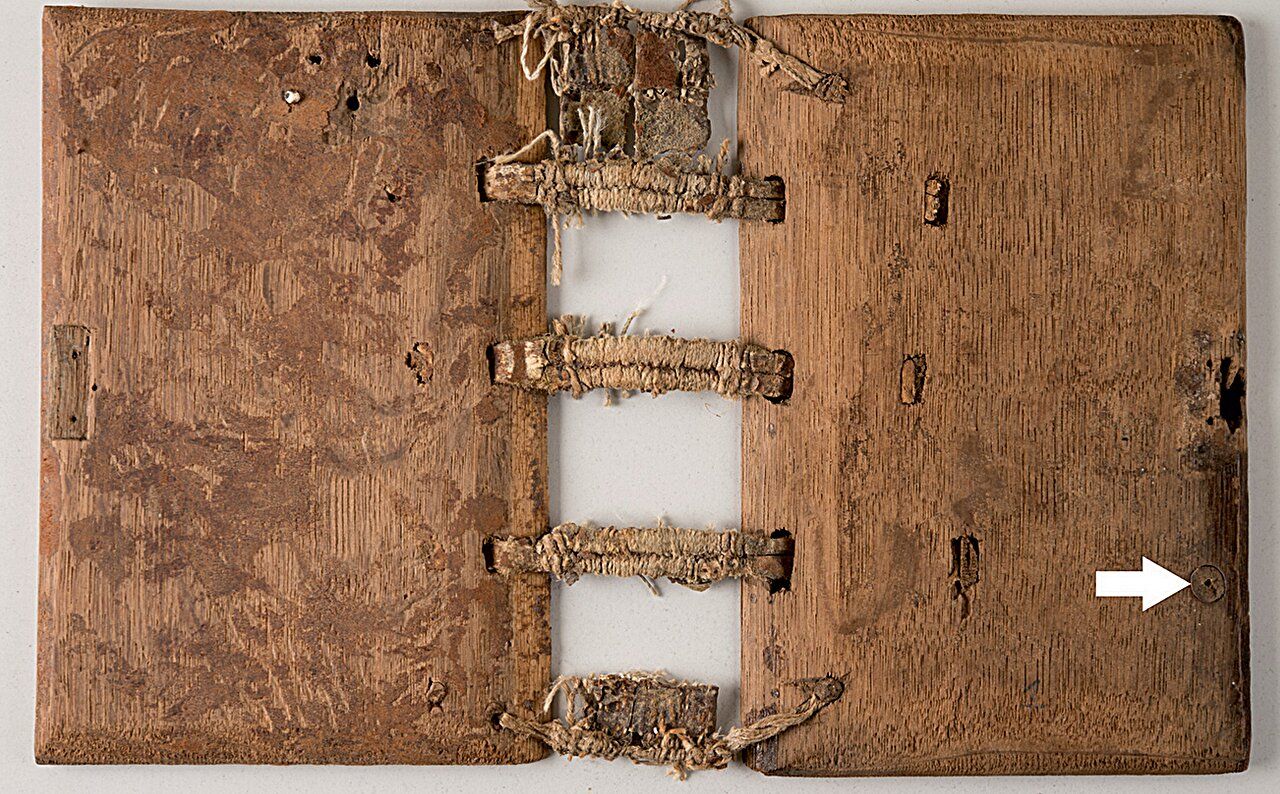The Codex of Türi, a 15th-century Latin-German lexicon, has been examined extensively. The oak bindings, previously disregarded, have provided unexpected insights via dendrochronological studies and strontium isotope examination. These methods have aided in determining both the age and source location of the wood utilized.
The rear cover of this piece originates from an oak tree chopped down between 1454 and 1466 in Lithuania. This aligns with the date noted within the script stating that the book was finished in 1454. Conversely, the front cover dates back further, sourced from timber harvested approximately around 1366 in Poland. Such disparity implies that the material may have been repurposed.
Scientists found a mended opening at the front cover, evidence of previous usage. Despite its initial purpose being unclear, this discovery underscores the significance of resource reuse during the medieval period. Craftsmen frequently utilized readily accessible studio supplies for such repairs.
Originally crafted for religious purposes, the manuscript endured through the ages only to vanish from memory later on. Following the closure of the Dominican convent in Tallinn in 1525, it was stored away with no additional application. The work’s contents—a bilingual Latin-German lexicon—offer insight into the scholarly milieu of that era.
The methodologies employed in this research introduce fresh avenues for examining old texts. By integrating tree-ring dating with isotopic examination, researchers can achieve accurate outcomes regarding the source and vintage of timber utilized. Such approaches might also be leveraged for studying additional historic documents.
This study illuminates lesser-known techniques used in medieval crafts. It highlights frequent material recycling, such as using old parchment for bookbindings reinforcement. The cover of the Codex of Türi serves as an impressive illustration, demonstrating how historical items can reveal surprising narratives.
What method does dendrochronology use to determine the age of old wood?
Dendrochronology represents a scientific technique focused on examining tree growth rings. Annually, a tree develops an additional ring whose size changes according to weather circumstances. Through correlating these sequences with chronologically referenced samples, scientists are able to ascertain precisely when a tree was cut down.
This method is especially beneficial for ancient wooden items like medieval manuscripts. Not only does it date the materials used, but it also identifies their geographical origins. Different climatic conditions across regions create distinctive patterns within the growth rings.
Dendrochronology demands specimens that are well-maintained and have sufficiently discernible growth rings. For the Codex of Türi, the rear cover retained 120 such rings, facilitating accurate dating. When executed meticulously, this technique does not cause damage, thus maintaining the artifact’s original condition intact.
How does strontium isotope analysis help determine the source of timber?
The use of strontium isotope analysis allows for identifying the geographical source of various substances. This method relies on the fact that strontium, which exists naturally in soils, gets taken up by vegetation such as plants and trees. The distinctive isotopic composition of this element changes according to regional geological conditions, thus providing each area with its own specific fingerprint.
When combined with dendrochronology, this technique enables scientists to determine both the age and origin of the wood. Regarding the Codex of Türi, this strategy showed that the covers originated from different areas: one from Lithuania and the other from Poland.
This method proves particularly beneficial when examining resource flows across different eras. It illustrates how craftsmen during the Middle Ages occasionally utilized materials sourced from far-off areas, highlighting the trade connections and reuse techniques prevalent in those times.
Source:
Journal of Cultural Heritage







